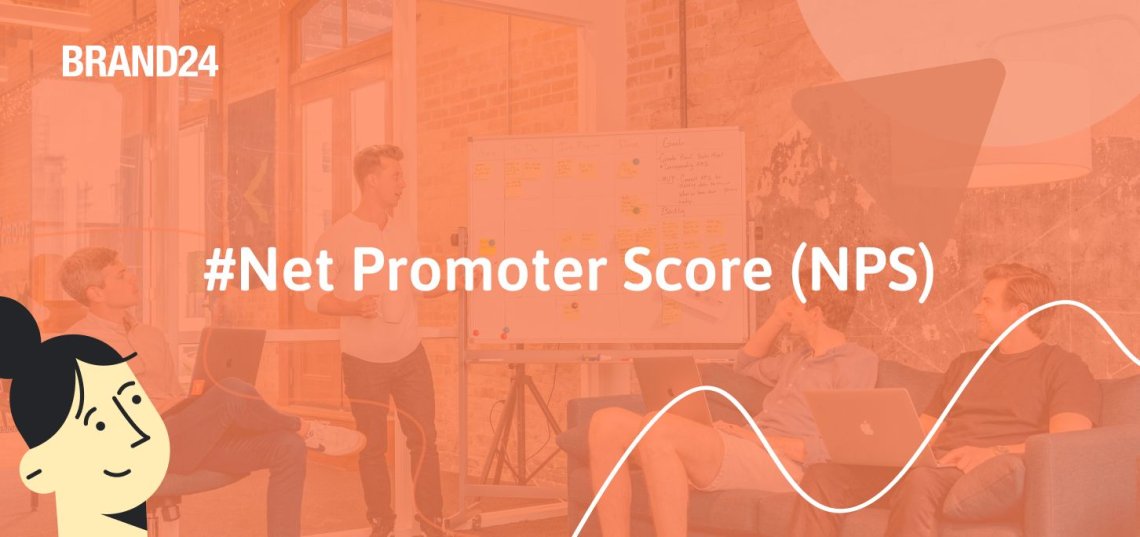What is NPS? A Guide to Net Promoter Score
Table of contents
NPS (Net Promoter Score) is one of many research metrics used in marketing. NPS is used to measure the willingness of customers to recommend a company’s products or services to others. Here’s everything you need to know about the metric.

Net Promoter Score (NPS) is a widely used metric for measuring customer loyalty and satisfaction. It’s a simple but powerful tool that can help businesses understand how likely their customers are to recommend their products or services to others.
In this article, I will discuss what NPS is, how it’s calculated, and why it’s important for businesses to track and understand their NPS. I will also provide some tips and best practices for using NPS to improve customer churn and drive growth. Whether you’re a business owner, marketer, or customer service professional, understanding NPS is essential for driving customer loyalty and growth.
So, let’s dive in and learn all about NPS!
Contents:
- Net Promoter Score (NPS) definition
- What can you measure using NPS?
- How to create an NPS survey?
- How to calculate Net Promoter Score and customer loyalty?
- What is a good NPS?
- Best practices for calculating NPS
Net Promoter Score (NPS) – definition
Net Promoter Score (NFS) is a metric used to measure customer experience. NPS measures customer satisfaction with companies. A higher NPS score is preferred. A single-questions survey measures NPS scores by reporting a range from -100 to 100. It has become a popular customer experience measurement metric.
It is a system designed by Bain and is used by more than 400,000 people every day to measure how the users feel about the products. The score determines how much a person gets from poor feedback to good feedback. It evaluates client perceptions by answering a simple question.
You are able to turn unhappy customers into loyal enthusiasts by calculating Net Promoter Score and implementing necessary changes.
Track what people are talking about your brand online with Brand24.
What can you measure using NPS?
Net Promoter Score measures customer loyalty and satisfaction by gauging customers’ likelihood to recommend a company’s products or services to others. NPS is based on a simple question, “On a scale of 0 to 10, how likely are you to recommend our company to a friend or colleague?” Responses are then categorized into three groups: Promoters (9-10), Passives (7-8), and Detractors (0-6).
NPS can be used to measure a variety of aspects of a business, such as:
- Overall customer satisfaction and loyalty
- The effectiveness of a company’s customer service
- The quality of a company’s products or services
- The strength of a company’s brand
- The level of customer engagement and advocacy
- The effectiveness of marketing and sales efforts
- Best practices for calculating NPS
It can also be used to measure customer satisfaction within specific business areas or product lines or to compare the performance of different locations, teams, or business units.
Additionally, tracking NPS over time can help a business understand how their customers’ perceptions of their company change, which can indicate areas that need improvement or indicate the success of certain initiatives.
How to create an NPS survey?
Creating an NPS survey is a straightforward process that can be done in a few simple steps:
- Decide on the survey question: The key question in an NPS survey is “On a scale of 0 to 10, how likely are you to recommend our company to a friend or colleague?” This question should be clear, easy to understand, and should be the same for all respondents.
- Choose a survey platform: There are many online tools available for creating and distributing NPS surveys, such as SurveyMonkey, Google Forms, and Typeform. These platforms allow you to create surveys, distribute them to your customers, and analyze the results.
- Create the survey: Use the chosen platform to create your survey, including the NPS question and any other questions that you want to ask. Be sure to keep the survey short and focused to ensure that customers are willing to complete it.
- Choose the target audience: Identify the group of customers you want to survey. It could be all customers, new customers, or a specific segment of customers.
- Distribute the survey: Share the survey with your customers, either by email, on your website, or through social media. Make sure to provide clear instructions on how to complete the survey and include a deadline for responses.
- Analyze the results: Once the survey is complete, analyze the results to determine your NPS score and identify any trends or patterns in the responses. Look for opportunities to improve customer loyalty and satisfaction.
- Act on the feedback: Finally, use the feedback from the survey to make changes and improvements to your business. Communicate the results and actions taken to the customers who participated in the survey.
It’s important to note that it’s recommended to run the survey regularly, like quarterly or semi-annually, to have a better understanding of how customers perceive the company over time and track progress. Also, it’s important to follow-up with customers who leave a low score to understand the reasons behind their dissatisfaction and work on resolving the issues.
How to calculate Net Promoter Score and customer loyalty?
The Net Promoter Score (NPS) is calculated by subtracting the percentage of detractors from the percentage of promoters. Here are the steps to calculate the NPS:
Collect the responses from your customers to the NPS question “On a scale of 0 to 10, how likely are you to recommend our company to a friend or colleague?”
Group the responses into three categories: Promoters (9-10), Passives (7-8), and Detractors (0-6).
Calculate the percentage of customers in each category by dividing the number of customers in that category by the total number of responses.
Subtract the percentage of Detractors from the percentage of Promoters. This is your Net Promoter Score.
For example, if you received 100 responses and 20% of customers gave a score of 9 or 10 (promoters), 60% gave a score of 7 or 8 (passives), and 20% gave a score of 0 to 6 (detractors), your NPS calculation would be:
- Promoters: 20%
- Passives: 60%
- Detractors: 20%
- NPS = 20% – 20% = 0
The NPS can range from -100 to 100, with positive scores indicating more promoters than detractors, zero indicating an equal number of promoters and detractors, and negative scores indicating more detractors than promoters.
It’s important to note that NPS alone doesn’t provide much insights, but when used along with open-ended questions or other metrics it can provide a more holistic view of customer satisfaction and loyalty.
Tip: Many customer feedback tools measure NPS.
Find the most loyal customers on social media with Brand24!
What is a good NPS?
The Net Promoter Score ranges from -100 to 100, with scores above 0 indicating more customers who are promoters (9-10) than detractors (0-6), and a score of 50 or higher indicating an exceptional level of customer loyalty. A good NPS score is considered to be above 0 and above the industry average. However, it’s important to note that NPS scores can vary greatly depending on the industry and company.
For example, a company in the technology industry may have a higher NPS than a company in the retail industry. It’s also important to compare the company’s NPS scores over time to track progress and see if any improvements have been made. It’s also important to track NPS by different segments, like new vs. repeating customers, or by different products or services to have a better understanding of customer feedback.
Additionally, the NPS score is only one metric, it should be used in combination with other metrics and customer feedback to have a more holistic view of customer satisfaction and loyalty.
Best practices for calculating NPS
Here are some best practices for collecting Net Promoter Score data:
- Keep the survey short and focused. NPS surveys should be short, with only the key question, “On a scale of 0 to 10, how likely are you to recommend our company to a friend or colleague?” and a few additional questions to understand the customer’s experience.
- Choose the right timing. Timing is important when it comes to collecting NPS data. Surveys should be sent out shortly after a customer has had an interaction with your company, whether that be after a purchase, service, or support experience.
- Make it easy to respond. Make the survey easy to complete by providing clear instructions, using a mobile-friendly format, and keeping the number of questions to a minimum.
- Follow up with low-scoring customers. Responding to low-scoring customers is a critical step in collecting NPS data. Follow up with customers who leave a low score to understand the reasons behind their dissatisfaction and work on resolving the issues.
- Track and analyze your data. It’s important to track and analyze your NPS data over time, not just to measure progress but also to identify trends, patterns, and areas that need improvement.
- Communicate results and actions. Share the results of your NPS survey with your team and communicate the actions taken resulting from the survey feedback.
- Make it a continuous process. Make NPS collection a continuous process, with regular surveys and follow-up actions. This will help you understand how customers perceive your company over time and track progress.
By following these best practices, you’ll be able to collect accurate NPS data that will give you valuable insights into your customers’ perceptions of your company and help you improve customer satisfaction and maintain loyal customers.
Are you ready to calculate your NPS?
Related articles
Top Reads
The Best AI Hashtag Tracker and Other Hashtag Tracking Tools [2026]
Social Media Reach: How to Measure & Improve It in 2025?
X (Twitter) Analytics Tools: The 10 Best to Try in 2026
Sentiment Analysis: What is it & Why do You Need it in 2025?
Share of Voice: Definition, Calculation, Tools [2026 Guide]
9 Steps to Strong Brand Awareness Strategy [2025]
Brand Monitoring: Tools & Guide for 2026
Brand Reputation Management: 6 Expert Tips for 2026
A Complete Guide to AI Social Media Analysis [2025]
How to See How Many Times a Hashtag Was Used on X (Twitter)
Start Social Listening!
Get the Brand24 trial and start social listening like a PRO.

